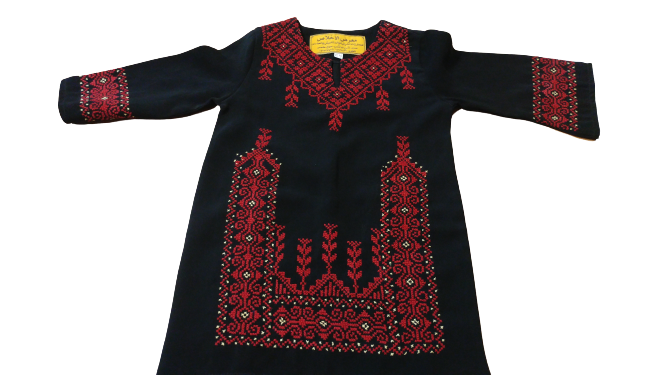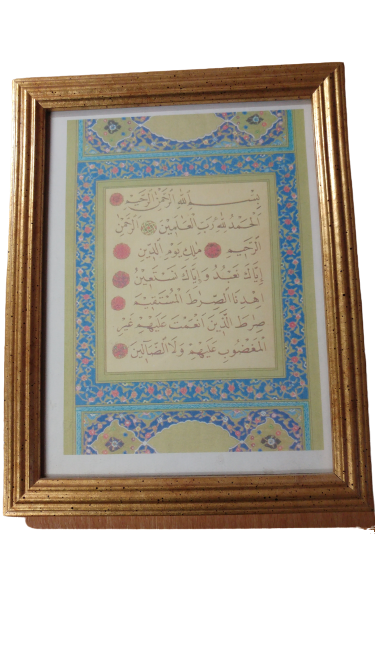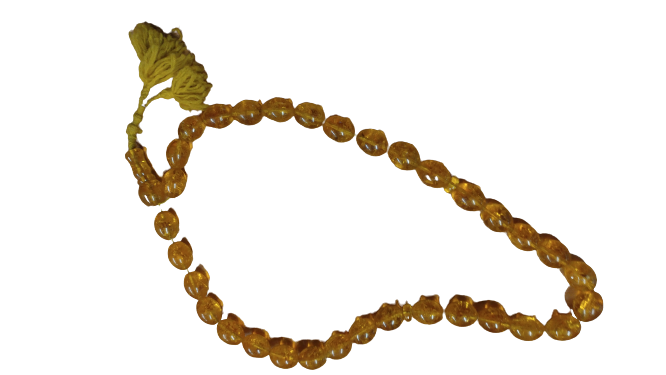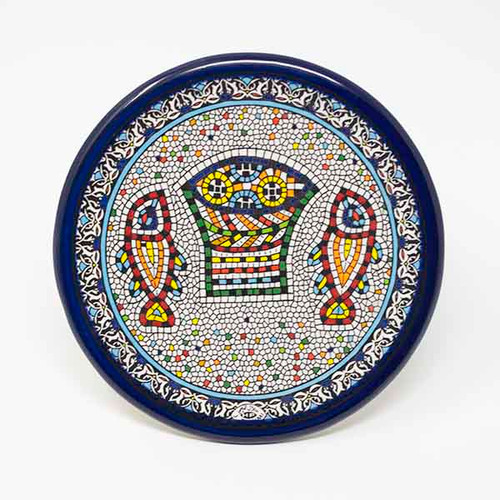Child's Thobe Abaya

We have an embroidered child's dress from Jordan in our Middle East Collection.
The elaborate embroidered patterns demonstrate careful artistry. This item of clothing would be worn by a small girl. It is called a "thobe abaya". An abaya is a loose garment worn over a thobe, which is an ankle-length robe, usually with long sleeves.
 This picture frame contains the Al-Fatiha. which means "the Opener/Opening".
This picture frame contains the Al-Fatiha. which means "the Opener/Opening". We have a set of 33 prayer beads in our collection.
We have a set of 33 prayer beads in our collection. This small serving dish is made in Palestine. It has been carefully hand painted to recreate the Byzantine mosaics of the loaves and fish.
This small serving dish is made in Palestine. It has been carefully hand painted to recreate the Byzantine mosaics of the loaves and fish.